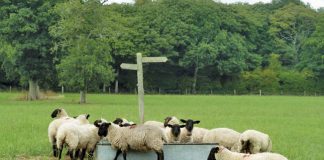
For agriculture, the situation is the exact opposite of this. Widespread and prolonged droughts, animal disease outbreaks and lacklustre commodity prices resulted in two years of negative growth for the farming sector in 2018 and 2019 when it contracted by 1,86% and 9,86% respectively.
Then 2020 happened. The world shut down due to the COVID-19 pandemic, forcing entire industries into close-to-zero revenue situations for several months.
READ True data on informal farming sector vital – BFAP report
Through all of this, the one sector that “emerged as a shining light in the economy” was agriculture, which, as a provider of essential goods, was largely exempt from lockdown restrictions.
According to the Bureau for Food and Agricultural Policy’s (BFAP) Baseline Agricultural Outlook for the period 2020 to 2029, which was released in late August, agriculture GDP was projected to grow 13% this year.
This is not only because the sector was able to continue trading during the lockdown, but because farmers delivered a bumper maize crop of 15,5 million tons, export prices of major fruits surged, and overall sales of agricultural produce in the first four months of the COVID-19 pandemic were strong.
The exceptions are wine and tobacco, where trade has been restricted through various stages of the lockdown.
But, as the report shows in one of the scenarios envisaged for the next 10 years, this remarkable upswing in performance will probably be short-lived.
There are a number of reasons for this, but it boils down to this: no matter how well the sector performs, or how well it is able to perform, if the rest of the economy does not lift up its head, people will simply not have the money to buy the food farmers produce.
The BFAP report also refers to structural challenges, such as infrastructure maintenance, reliable electricity supply, and the capacity of critical public services and municipalities.
According to the outlook, agricultural GDP is likely to again be in negative territory in 2021 and 2022, with annual growth never rising above low single digits over the next decade.
This assumption is based on what the report describes as a “fundamentally weak demand environment, combined with persistently high stock levels”, which suggests that commodity prices will remain under pressure for some time.
READ COVID-19 pushes SA citrus exports to the US to new highs
Perhaps most telling about the state that South Africa finds itself in is this insight from BFAP: the weight of the economic downturn in 2020 and the prolonged recovery suggest that some of the improvements in dietary diversification over the past decade may be reversed.
As a result, the long-term decline in per capita maize consumption is expected to turn around, yielding an increase in per capita consumption over the coming decade.
Some farmers, especially those who produce high-value products, may find a refuge in export markets, but for the majority of farmers, who produce basic foodstuffs that rely on local consumption, the farming sector’s fortunes remain intrinsically linked to South Africa’s economic future, which, to be honest, is not very bright.











